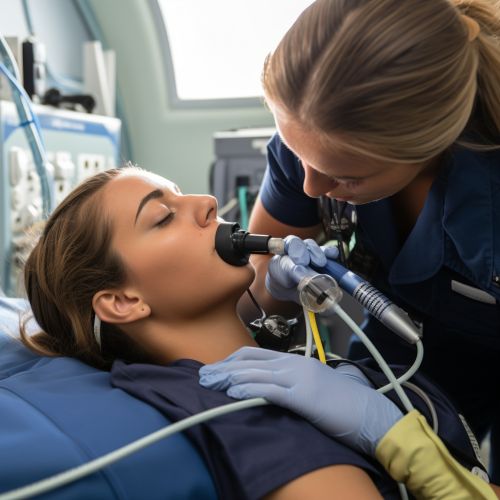Endotracheal intubation
Overview
Endotracheal intubation is a medical procedure in which a tube is placed into the windpipe (trachea) through the mouth or nose. This procedure is typically performed in emergency situations to allow for artificial ventilation, or in preparation for certain types of surgery where general anesthesia is required. The endotracheal tube serves as an open passage through the upper airway, ensuring that the patient can breathe and oxygen can be delivered to the lungs.


Indications
Endotracheal intubation is often performed in response to life-threatening situations such as severe trauma, cardiac arrest, or respiratory failure. It may also be used in less urgent situations where the airway needs to be secured, such as during general anesthesia for surgery or for patients who are unable to breathe on their own. Other indications include the need for airway protection in patients with impaired consciousness or those at risk of aspiration, and for the administration of certain medications.
Procedure
The procedure for endotracheal intubation involves several steps. First, the patient is typically sedated or anesthetized to minimize discomfort and prevent coughing or gagging. The patient's head is then positioned to align the oral, pharyngeal, and laryngeal axes, which facilitates passage of the tube. A laryngoscope is used to visualize the vocal cords, and the endotracheal tube is inserted through the mouth or nose and advanced into the trachea. Once the tube is in place, it is secured and connected to a ventilator or bag-valve device. The correct placement of the tube is confirmed by listening for equal breath sounds on both sides of the chest and by using a device to measure exhaled carbon dioxide levels.
Complications
While endotracheal intubation is a commonly performed procedure, it is not without risks. Complications can occur during the procedure itself, or as a result of having an endotracheal tube in place. These can include injury to the teeth, mouth, or throat; incorrect placement of the tube; difficulty breathing; and infection. Longer-term complications can include tracheal stenosis, or narrowing of the trachea, and tracheomalacia, or softening of the tracheal tissues.
Alternatives
In some cases, alternative methods to endotracheal intubation may be considered. These include the use of a laryngeal mask airway, which is a device that sits over the entrance to the trachea rather than inside it, or a tracheostomy, which is a surgical procedure to create an opening directly into the trachea through the neck. The choice of method depends on a variety of factors, including the patient's condition, the reason for the procedure, and the healthcare provider's experience and comfort with the technique.
